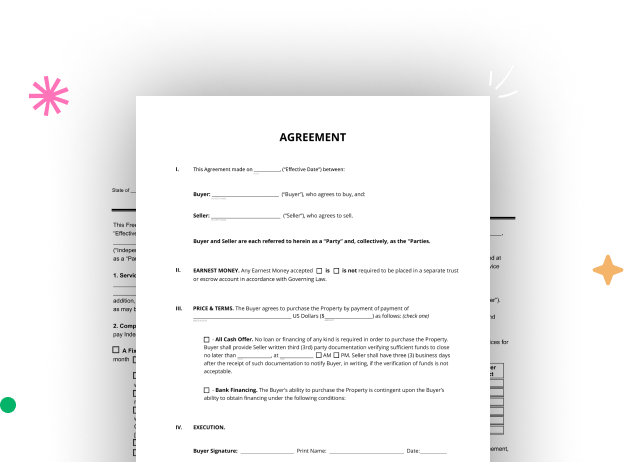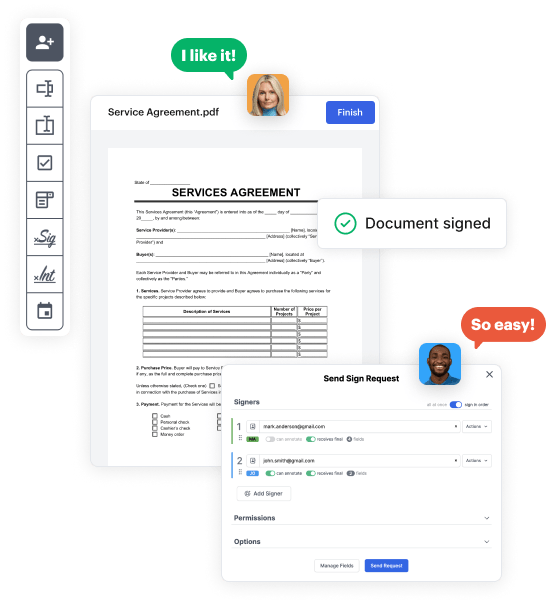

First, sign in to your DocHub account. If you don't have one, you can easily sign up for free.
Once signed in, head to your dashboard. This is your primary hub for all document-centric tasks.
In your dashboard, select New Document in the upper left corner. Hit Create Blank Document to create the Property Ownership Legal Document from scratch.
Add various elements like text boxes, images, signature fields, and other interactive areas to your template and assign these fields to certain users as required.
Personalize your document by inserting guidelines or any other vital tips leveraging the text tool.
Thoroughly review your created Property Ownership Legal Document for any errors or needed adjustments. Leverage DocHub's editing features to polish your template.
After finalizing, save your work. You may select to keep it within DocHub, export it to various storage services, or forward it via a link or email.